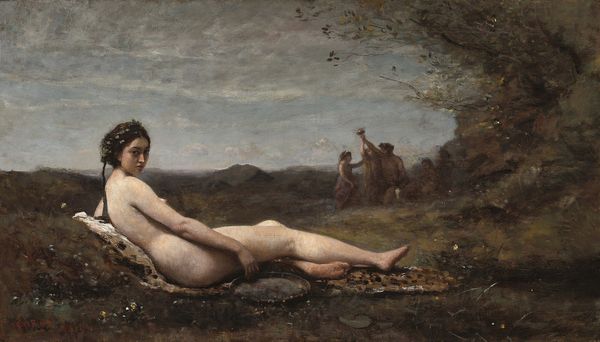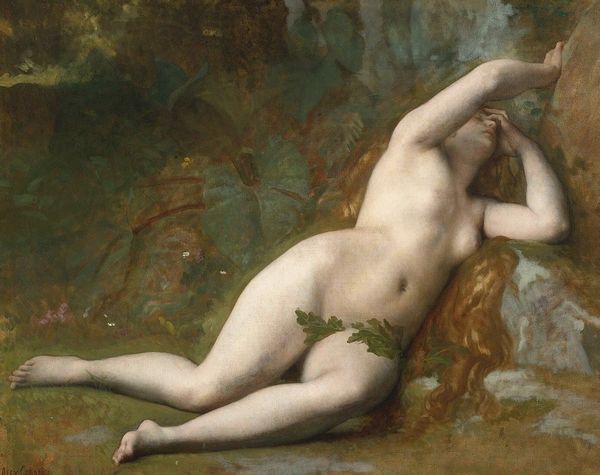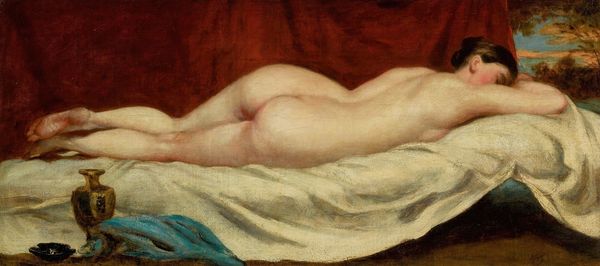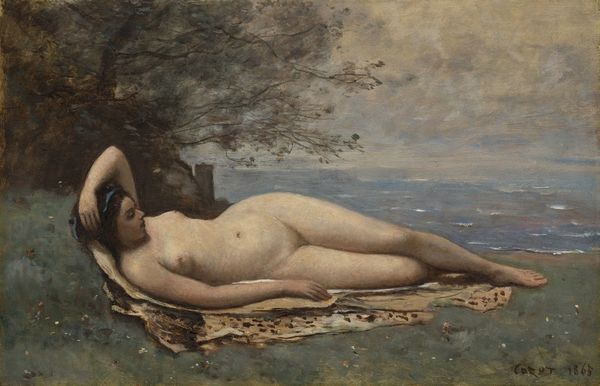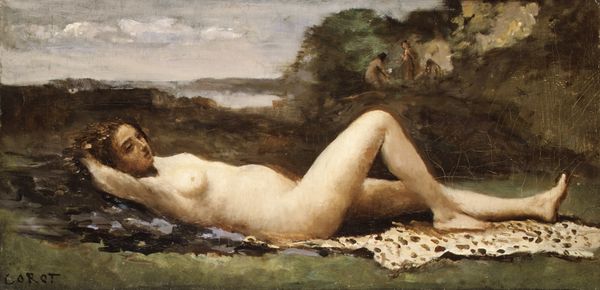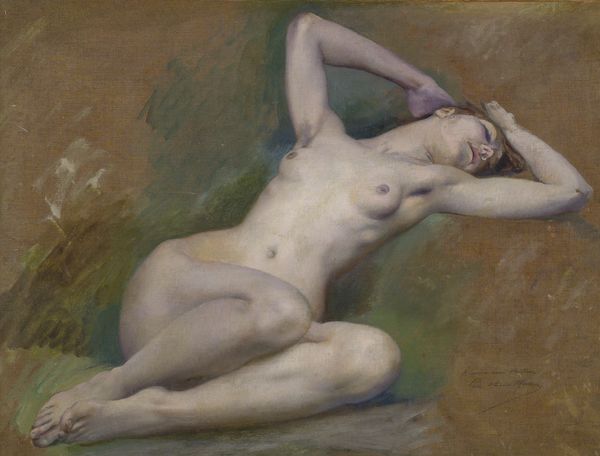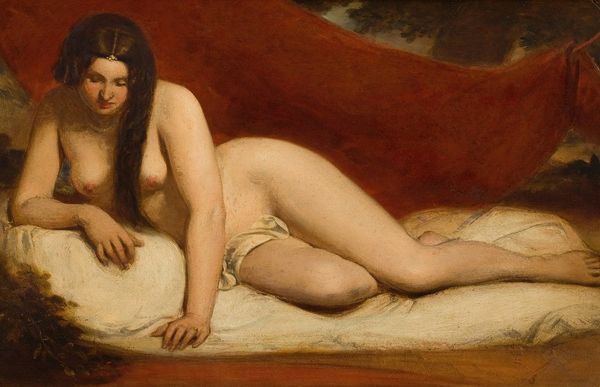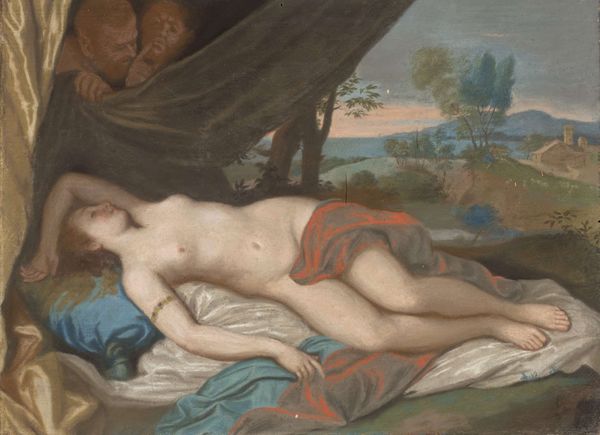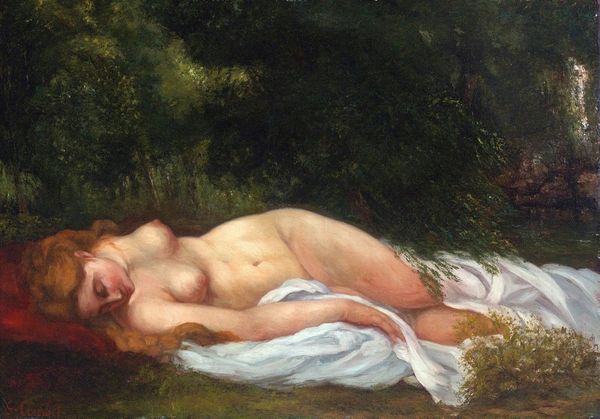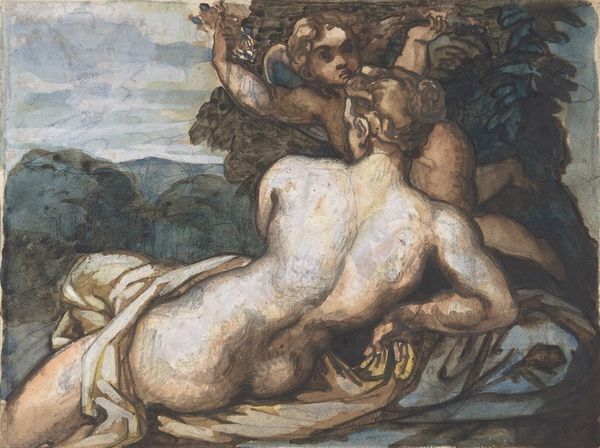
Dimensions: 10 1/2 x 18 1/4 in. (26.67 x 46.36 cm) (canvas)18 1/8 x 25 5/8 x 2 in. (46.04 x 65.09 x 5.08 cm) (outer frame)
Copyright: Public Domain
Curator: Here we have Camille Corot’s “Evocation of Love,” painted sometime between 1850 and 1855, and currently residing here at the Minneapolis Institute of Art. It’s oil on canvas, and full of suggestive allegory. Editor: It strikes me as both serene and vaguely unsettling. The woman reclines in this… sort of vulnerable pose, yet there's a curious detachment in her gaze. The muted palette enhances the sense of otherworldly quiet. Curator: It’s certainly not the kind of explosive passion we might expect from a painting about the “evocation of love." This isn’t Rubens; it's far more internalized, more dreamlike. Note how Corot blurs the line between the figure and the landscape. Editor: Which arguably mirrors a feminist critique of art history: is she an actor or an acted-upon object? A creator or something to be created, evoked? Is this Corot’s statement on the limitations placed on women even within mythology and allegory? Cupid looks awfully gleeful. Curator: Hah! Cheeky little Cupid. Well, I tend to see Cupid as more of a… manifestation of her inner longing, rather than some external force imposing desire upon her. That landscape feels ripe with the same sense of potential and budding sensuality as the woman herself. Think about how love, as an experience, exists simultaneously inside and outside oneself. Editor: And you can see those anxieties echoed in similar romantic allegories from the era, can't you? This pre-dates second-wave feminism by over a century, but these anxieties surrounding the sexualisation of the female form—the expectation of being desired or 'loved’– were already burgeoning in the arts. Corot maybe wasn't consciously aligning himself with later feminist concepts, but art, like all creative practices, pre-figures reality as much as reflects it. Curator: I agree that these anxieties absolutely ripple under the surface, it speaks to the power of art. I think what interests me most is that persistent question of… what *kind* of love are we evoking? It feels, to me, like a far more complicated, and honest question, than the painting initially suggests. Editor: Exactly! And seeing it framed that way changes how we might initially interact with it, doesn't it? Gives us a lot to think about.
Comments
minneapolisinstituteofart almost 2 years ago
⋮
This painting once belonged to James J. Hill (1838-1916), the Minnesota railroad magnate whose collection of European paintings forms the basis of the Institute's nineteenth-century holdings.
Join the conversation
Join millions of artists and users on Artera today and experience the ultimate creative platform.
